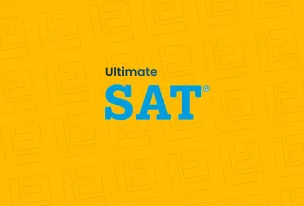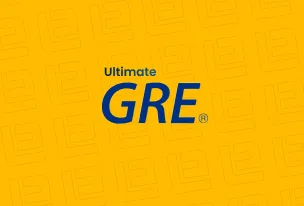Learning the Japanese language is the right choice to learn this language easily and effectively. In this article, we will explore the importance of learning Japanese, the benefits you can gain, and some practical advice to start your journey in learning this beautiful and culturally rich language.
Read also: Top Universities in Japan: Top 5 Choices!
Why Learn Japanese?
-
Beauty and Cultural Richness of Japan
-
Beauty and Cultural Richness of Japan
-
Exciting Career Opportunities
-
Expanding Social Network and Communication Skills
-
Find the Right Learning Resources
-
Start with Hiragana and Katakana
-
Practice Listening and Speaking
-
Immerse Yourself in Japanese Culture
Japan is a country rich in unique and amazing culture. By learning the Japanese language, you will have a deeper access to Japanese art, literature, traditions, and popular culture such as manga and anime. Knowing the Japanese language will help you understand the cultural context behind artistic works and appreciate them more deeply.
Beyond its pop culture icons, Japan’s beauty is also reflected in its philosophy of life, such as the concept of wabi-sabi (appreciating imperfection) and omotenashi (the spirit of hospitality). Learning the language gives you insight into these values that shape Japanese daily life and mindset. For instance, by understanding how certain words carry layers of meaning, you can see how politeness, respect, and mindfulness are deeply embedded in Japanese communication.
If you’re interested in Japanese literature or cinema, knowing the language will enrich your interpretation of masterpieces by authors like Haruki Murakami or filmmakers such as Hayao Miyazaki. Subtle cultural nuances often get lost in translation, so learning the language helps you enjoy these works in their original form. Furthermore, exploring local traditions—from the tea ceremony to seasonal festivals—becomes more meaningful when you understand the words, rituals, and philosophies behind them.
In this era of globalization, foreign language proficiency is a highly valuable asset. The Japanese language is one of the most sought-after languages in the business and industrial world. If you have Japanese language skills, you can open up exciting career opportunities in various fields such as technology, hospitality, tourism, and international relations.
Japan is home to some of the world’s largest corporations—like Toyota, Sony, and Panasonic—and these companies value professionals who can bridge communication between Japan and other markets. Even startups and creative industries in Japan are increasingly international, offering roles for foreign employees who can collaborate effectively in bilingual environments. Learning Japanese not only adds value to your resume but also demonstrates adaptability, cross-cultural understanding, and a global mindset—all qualities that employers look for.
In addition, proficiency in Japanese opens doors to scholarship programs, research exchanges, and international projects. Many universities and institutions in Japan offer opportunities for foreign students and researchers, especially those with intermediate or advanced Japanese skills. By investing time in learning the language, you’re not just gaining a skill—you’re expanding your professional horizons and future possibilities.
Learning the Japanese language also provides you with the opportunity to interact with Japanese people directly. You can expand your social network, meet new people, and build valuable relationships. Additionally, the ability to communicate in Japanese will be helpful when traveling to Japan or when encountering Japanese tourists in your country.
When you learn to communicate in Japanese, you also develop strong listening and empathy skills. Japanese conversations often rely on non-verbal cues, tone, and context. By understanding these nuances, you’ll naturally become a better communicator—not just in Japanese, but in your own native language as well. This skill is particularly valuable in multicultural settings, where clarity, respect, and understanding are key to building meaningful connections.
Moreover, joining Japanese language communities—whether online or offline—can introduce you to like-minded individuals who share your interest in culture, travel, or language learning. You may even find lifelong friendships or professional collaborations through these interactions. Many learners also find joy in attending local Japanese festivals, language exchange events, or workshops, where they can practice their skills in a real social environment.
Ultimately, learning Japanese is more than just mastering a foreign language—it’s about connecting with people, culture, and new opportunities on a deeper level. The journey may take time and effort, but the rewards—both personal and professional—are truly worth it.
Read also: Differences in Japanese Language Tests: JTEST, NAT Test, EJU, and JLPT
How to Start Learning Japanese
First and foremost, you need to find the right learning resources. There are many books, online courses, mobile applications, and private tutors that can assist you in learning the Japanese language. Choose resources that align with your learning style and provide comprehensive and structured materials.
Hiragana and Katakana are the two basic Japanese scripts that need to be learned. Hiragana is used to write native Japanese words, while Katakana is used for loanwords from foreign languages. Mastering these two scripts is essential as they form the foundation for learning more complex Kanji characters.
It is important to practice your listening and speaking skills in the Japanese language. Listen to the audio or watch videos in Japanese, and practice repeating the sounds and phrases you hear. Engage in conversations with friends or study partners who are also learning Japanese to practice everyday language interactions.
Immersing yourself in Japanese culture is an effective way to deepen your understanding of the Japanese language. Enjoy Japanese cuisine, watch Japanese films or dramas, listen to Japanese music, and learn about Japanese festivals and traditional celebrations. The more you engage with the culture, the easier and more enjoyable the process of learning the Japanese language will be.
Why Choose Ultimate Education?
In July 2017, Ultimate Education introduced Japanese private lessons, leveraging a scientific approach rooted in Second-Language Acquisition research (SLA). This methodology aids Japanese learners in enhancing their conversational skills in a more efficient and intelligent manner. Ultimate Education’s certified instructors, proficient in English, encourage learners to prepare vocabulary and grammar topics in advance, allowing them to use English materials and emphasizing practical application during live lessons. This innovative approach to learning is known as “flipped learning,” recognized for its effectiveness in boosting speaking proficiency. You can witness real-time lessons lasting 50 minutes.
Before committing to lessons at Ultimate Education, prospective learners have the opportunity to undergo free trials. Through an initial interview, a level assessment, and one trial session, Ultimate Education’s instructors assess your specific challenges and devise solutions in line with SLA principles. Subsequently, they tailor a personalized and strategic curriculum that encompasses preparation, lessons, and comprehensive reviews.
Ultimate Education offers a diverse range of Japanese language courses designed to cater to various needs, encompassing both business communication and everyday conversation, as well as JLPT (Japanese Language Proficiency Test) preparation at all proficiency levels. Those who are serious about learning Japanese will find a strong alignment with Ultimate Education. Embark on an effective Japanese language learning journey with the cutting-edge programs offered by Ultimate Education!
Read also: Want to Study in Japan? Let’s take a peek at the MJSP Hokkaido University Undergraduate Scholarship
Learning the Japanese language is a beneficial step to enhancing cultural knowledge, expanding career opportunities, and broadening your social network. By dedicating time and effort to learning this language, you will open the doors to a fascinating and enriching new world. Feel free to start your Japanese language journey now!
Exploration of Prominent Resources for Learning Japanese
The Japanese language is difficult to learn due to its complex structure, which is comprised of three distinct scripts (Hiragana, Katakana, and Kanji) and intricate grammar rules. Whether you want to comprehend your favorite anime and video games in their original form, set the groundwork for living in Japan, or simply attain proficiency in Japanese, self-directed learning is a significant undertaking. Although enrolling in a language academy with qualified instructors remains the best option, it may not be available to everyone, and some individuals would rather acquire foundational knowledge before enrolling. Thankfully, there is an abundance of Japanese language textbooks on the market. Choosing the correct textbook is crucial, as it will serve as your initial introduction to the Japanese language; a poor choice can significantly impede your progress. Despite the difficulty in designating a single definitive Japanese language textbook as universally superior due to the diversity of learner preferences, this article will present five textbooks that the author considers to be among the best for learning Japanese. Each textbook will be briefly described to help readers make an informed choice.
Minn no Japanese
Minna no Nihongo is one of the most renowned textbook series. It attracts both praise and criticism from Japanese language students. This series is used in approximately 99.9% of Japanese schools, so those contemplating enrollment in such institutions should familiarize themselves with it in advance. However, some foreign students view these textbooks as obsolete and unsuitable for their requirements. Minna no Nihongo is aligned with the Japanese-Language Proficiency Test (JLPT), making it easier for students to determine their proficiency levels. Completion of Minna no Nihongo Beginner II, for instance, roughly corresponds to JLPT3 and signifies the ability to comprehend native Japanese materials with simplified vocabulary and kanji, as well as engage in commonplace conversations at a natural pace. While some view the fact that Minna no Nihongo is entirely in Japanese as an advantage for language immersion, others view it as a disadvantage for learning grammatical rules that are not explained in one’s native tongue. Nonetheless, a companion volume with translations and explanatory notes is available in fourteen languages.
The Marugoto
Marugoto is a series of Japanese language textbooks created by the Japan Foundation, the JLPT’s administrators. Surprisingly, these textbooks are rarely mentioned in discussions of Japanese learning resources, yet many students hold them in high regard. Although these books are produced by the Japan Foundation, they do not follow the JLPT sequence; rather, they correspond to the Common European Framework of Languages (CEFR) levels, such as A1, A2, B1, etc. Marugoto is more straightforward in its presentation of grammar and vocabulary than Minna no Nihongo. In addition, these textbooks emphasize real-world Japanese language utilization. The publications are available in multiple languages and are lavishly illustrated. Notably, they provide free downloadable materials, such as exercises and listening resources, on their website, allowing prospective students to sample the material before making a decision.
Genji –
Alongside Minna no Nihongo, Genki is one of the most popular and extensively used Japanese language textbooks for beginners. Genki was originally designed for university-level Japanese courses and focuses on vocabulary and situations pertinent to exchange students. As a result, the material may be less applicable to those with distinct goals. Genki resembles Minna no Nihongo, but it is more user-friendly and provides a simplified learning environment. Lessons emphasize commonplace situations over JLPT preparation. Each course begins with dialogues and real-world scenarios, followed by detailed explanations of the associated grammar and vocabulary. Genki is distinguished by its explanations in English, which many language learners find more familiar and approachable.
A Grammar Dictionary of Japanese
Comprising three volumes – Basic, Intermediate, and Advanced – A Dictionary of Japanese Grammar functions as an indispensable resource for learners. In lieu of conventional dictionary definitions, this compilation alphabetizes Japanese grammar principles. Each entry contains an English translation, analogous Japanese structures or related expressions, a thorough explication of the Japanese grammatical structure, and a multitude of illustrative examples. In addition, these dictionaries include additional information, such as verb conjugation charts, inventories of suffixes and conjunctions, and specific structures. This resource is invaluable for students seeking a comprehensive grasp of Japanese grammar.
The Basic Kanji Text
Mastering kanji is an essential aspect of learning Japanese that goes beyond grammar. According to the author, Basic Kanji Book is one of the most comprehensive resources for kanji acquisition. This two-volume series encompasses the first 500 kanji characters taught in Japanese elementary schools, with 250 characters per volume. It provides guidance on stroke order, practice opportunities for writing, meanings, and two interpretations for each kanji. In addition, each chapter contains exercises to reinforce the kanji and related vocabulary presented in that section.
In conclusion, the choice of a Japanese textbook has a significant impact on the language learning voyage. The five presented textbooks, each with its own strengths and characteristics, appeal to a variety of learning preferences. It is prudent to consider your objectives, proficiency level, and preferred learning style when selecting a textbook. The path to mastering Japanese is ultimately determined by your commitment, perseverance, and the learning resources you choose.
Read Also: Tips for Fluent Japanese – Easy Ways to Master Japanese Quickly
FAQs (Frequently Asked Questions)
Q1: Is the Japanese language course suitable for beginners?
A1: Yes, Japanese language course can be attended by beginners as well. The learning program will be adjusted to each individual’s level of understanding and needs.
Q2: How long does it take to master the Japanese language?
A2: The time required to master the Japanese language varies depending on individual commitment, learning intensity, and talent. However, with dedication and consistent practice, progress can be achieved in a relatively short time.
Q3: Does the Japanese language course only focus on grammar learning?
A3: No, the Japanese language course also covers listening, speaking, reading, and writing skills. This holistic learning will help you become proficient in effectively communicating in the Japanese language.
Q4: Is a Japanese language certificate important for a career?
A4: Yes, having a Japanese language certificate can enhance your career opportunities, especially if you plan to work in Japanese companies or in fields involving interactions with Japanese people.
Q5: How can I enroll in a course?
A5: You can enroll for a Japanese language course by visiting our website and following the provided registration instructions.






